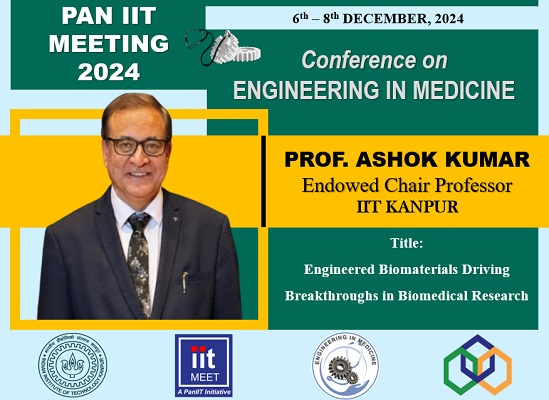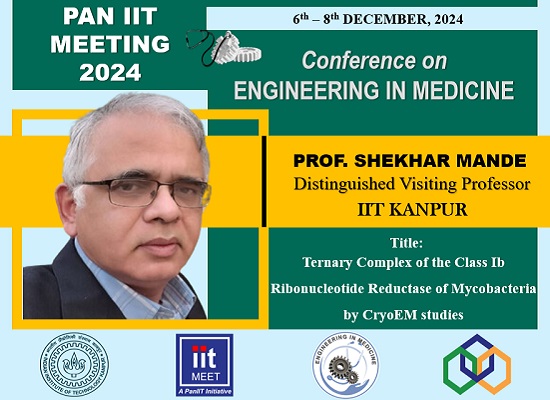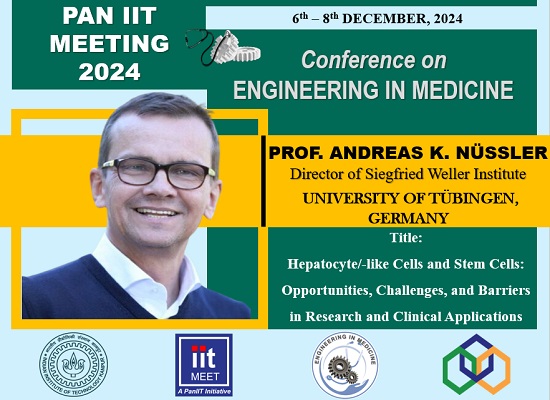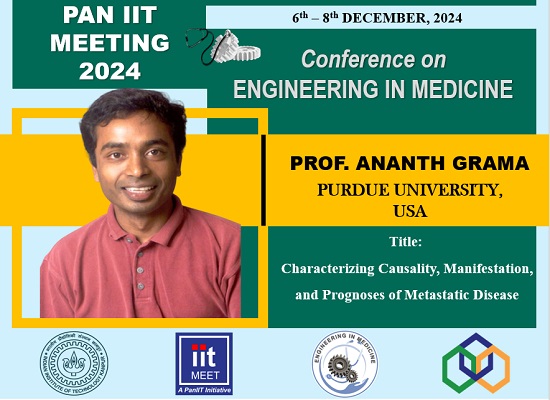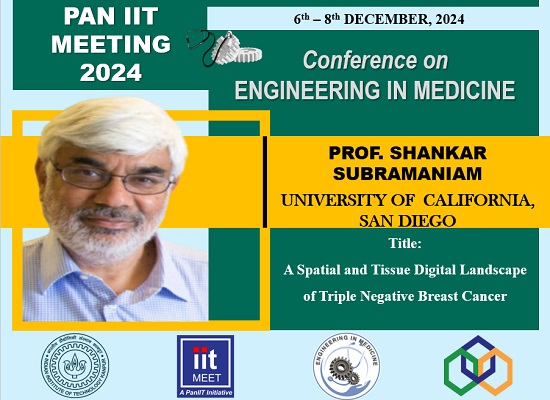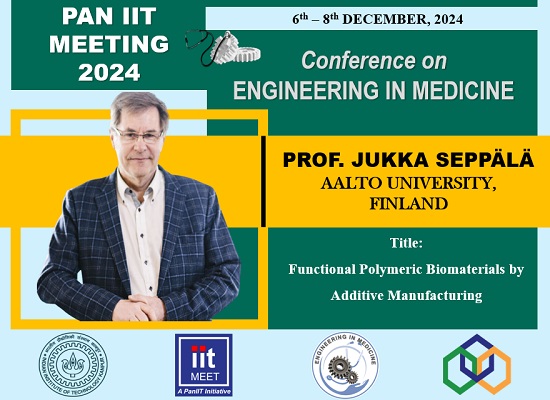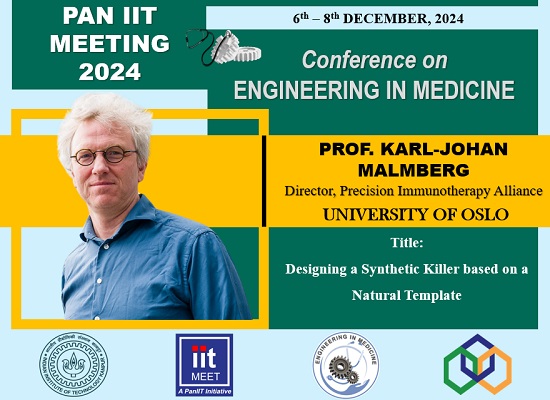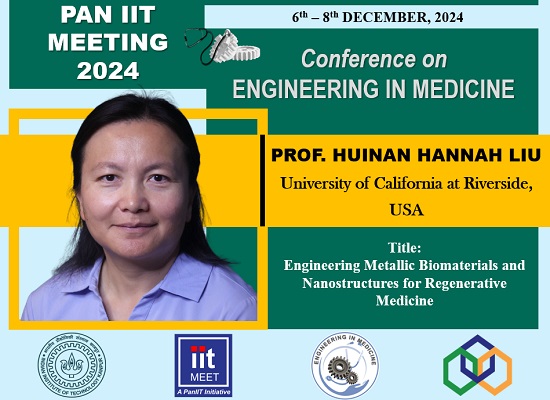Regenerative Medicine
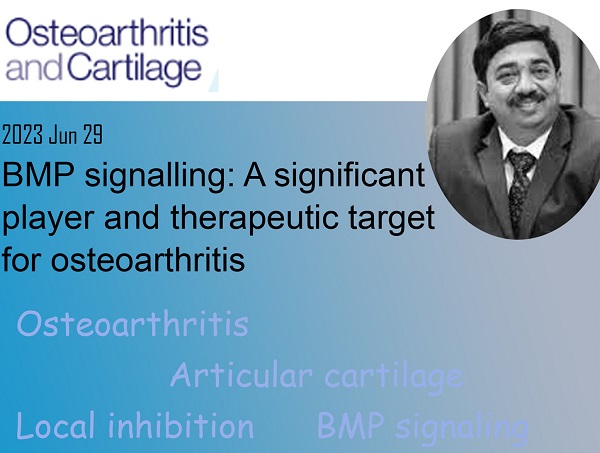
A study by Prof. Amitabha Bandyopadhyay and team uncovering the critical role of BMP signaling in Osteoarthritis (OA)—a painful debilitating disorder causing locomotive disability. The study offers local inhibition of BMP signaling as an effective therapy for OA.
https://pubmed.ncbi.nlm.nih.gov/37392862/
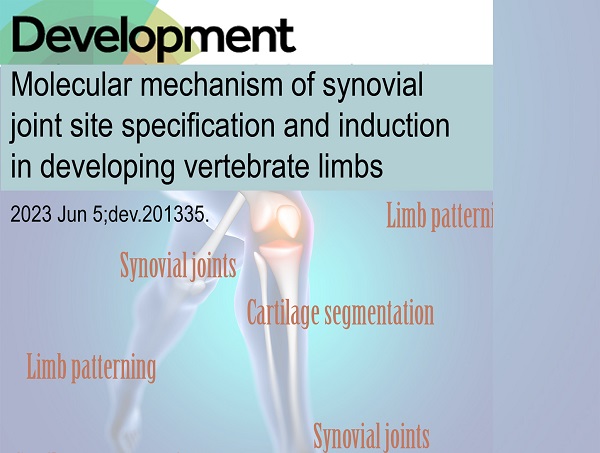
An insightful study by Prof. Amitabha Bandyopadhyay and team offers critical understanding into formation of limb joints. The study elaborates how interplay between key signaling pathways triggers activation of essential molecules that mark future joint sites. The insights offered in the study could be explored to address congenital skeletal joint defects.
https://pubmed.ncbi.nlm.nih.gov/37272420/
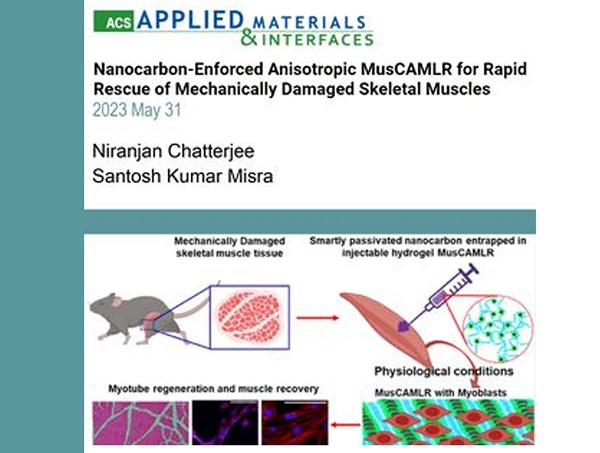
A study by Prof. Santosh Misra's team, spearheaded by Niranjan Chatterjee, displays the fabrication and use of advanced biomaterial systems as a non-drug therapeutic alternative for healing mechanically damaged muscles. The study shows how the passivated nanocarbon based biomaterial assists muscle regeneration, and could be of potential use in addressing other muscle disorders including muscular dystrophy.
https://pubmed.ncbi.nlm.nih.gov/37257065/
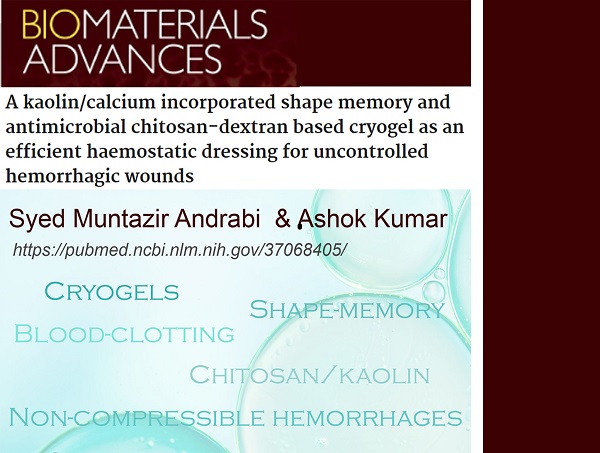
In an effort to mitigate damage due to incessant hemorrhage, Prof. Ashok Kumar and team have developed a cryogel with profound fluid absorption ability, rapid blood clotting and good antibacterial activity that can effectively inhibit bleeding from irregular and differently-compressible wound sites.
https://pubmed.ncbi.nlm.nih.gov/37068405/
Overview
With the advent of improvements in medical treatment, the ageing population is on the rise. This, combined with the continuous increase in the population has led to two major health related concerns: (i) increased prevalence of diseases, and (ii) increased mortality rates. It has been a perpetual goal of mankind to master the understanding of how diseases occur and arrive at better treatment strategies based on the understanding. In this pursuit, a more recent development has been the strategy of harnessing the fundamental building block of the human body, the human “cell”, for the treatment of disease conditions. This strategy, commonly known as ‘cell therapy’ has opened up multiple gates (so to say) for enabling improved treatment of diseases (eg. β-islet cell transplantation for the treatment of diabetes). Since all disease conditions involve a large collection of cells or ‘tissues’ being adversely affected, it became a natural goal to try and find ways to either replace or replenish these diseased tissues with healthy and functional tissue so as to restore normalcy to the concerned tissue and as a consequence to the individual. This approach of treating diseases has evolved as a new strategy/area of bioengineering that is called ‘tissue engineering’. Tissue engineering, if successful, can not only treat diseased tissue but can also be very useful for treating trauma patients (i.e. tissue lost in accidents or sports injuries). The field of tissue engineering has gradually grown to include cell engineering (including stem cell engineering), immune-engineering, extracellular matrix (ECM) engineering, development of biomaterial-based artificial ECMs and modulation/engineering of cell signalling. Since the implications of the field of ‘tissue engineering’ are largely in medicine the field has gradually begun to include aspects such as transplantation medicine, radiology (imaging especially non-invasive imaging of tissues), general surgery and other specialized medical disciplines that have to do with a specific disease condition (eg. Orthopaedics for bone tissue engineering). As a consequence of the involvement of medicine, the field of ‘tissue engineering’ has now become more inclusive and is termed as ‘regenerative medicine’. Regenerative medicine is projected to have a great impact on how patients will be treated in the future and hence is one of the chosen major goals of the ‘Centre for Engineering in Medicine’. Among the recent advances in the treatment of human disease in the modern era, few have been perceived to hold as much promise as stem cells and regenerative medicine for a wide variety of conditions. They offer unprecedented opportunities to develop new regenerative strategies and therapeutic approaches for debilitating conditions, previously considered untreatable.
Future Plans
The current faculty at BSBE department come from a range of science (Mathematics, Physics, Chemistry and Biology) and engineering disciplines (Chemical Engineering, Computer Engineering, Electronics and Telecommunication Engineering) and work in challenging problems that transcend the boundaries of science, engineering and medicine.
Grand Challenge
Some of the grand challenges that we would like to meet are as follows:
- Osteoarthritis is a degenerative condition that affects a large section of the Indian and world population. The current treatment strategies provide only symptomatic relief or a replacement of the damaged tissue using implants. A major challenge in the field has been to regenerate articular cartilage that can enable biomechanical function. Harnessing the expertise in developmental biology, scaffold engineering, stem cell engineering and growth factor delivery, we plan to take a hitherto unexplored developmental biology-based approach wherein the events and molecular players that play and important role in cartilage development will be tested for their ability to cause regeneration in adult cartilage tissue.
- Regeneration of tissues that do not have the inherent capacity to heal such as cardiac tissue and neural tissue have been a challenge in the field for quite some time now. We plan to take a biomimetic approach to design novel 3-dimensional scaffolds that can support the local tissue cells and thereby enable the regeneration of functional tissue.
- Oral cancer has a high prevalence in the local Kanpur and nearby areas. Unfortunately a large number of cases demand removal of large sections of the bone along with the tumor tissue. Therefore, development of therapies that can not only treat the cancer but can also enable regeneration of the lost bone tissue would be of high impact. Therefore, one of the grand challenges is to be able to achieve this.
- Modulating/engineering the immune system to enable improved treatment in disease conditions is an important and challenging goal. Immuno-engineering will include combining engineering techniques with immunology for improving therapeutics.











